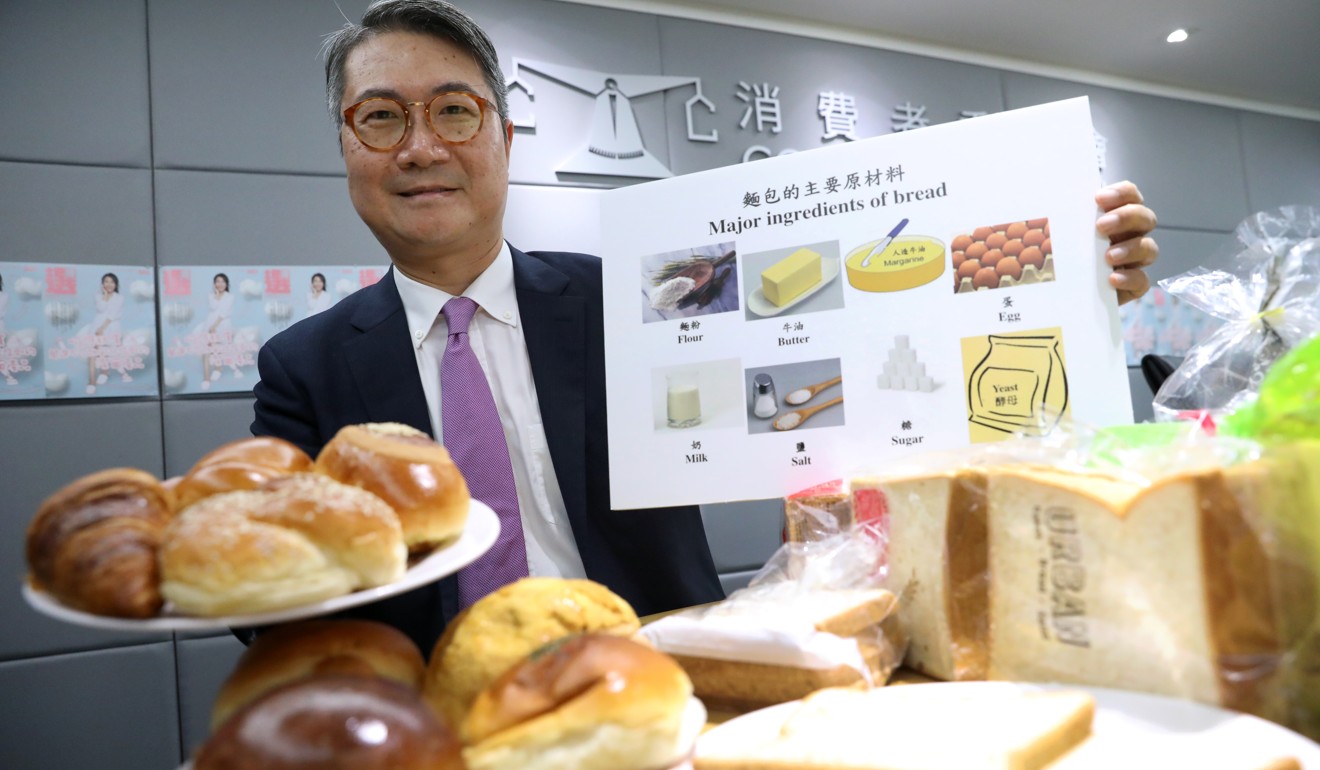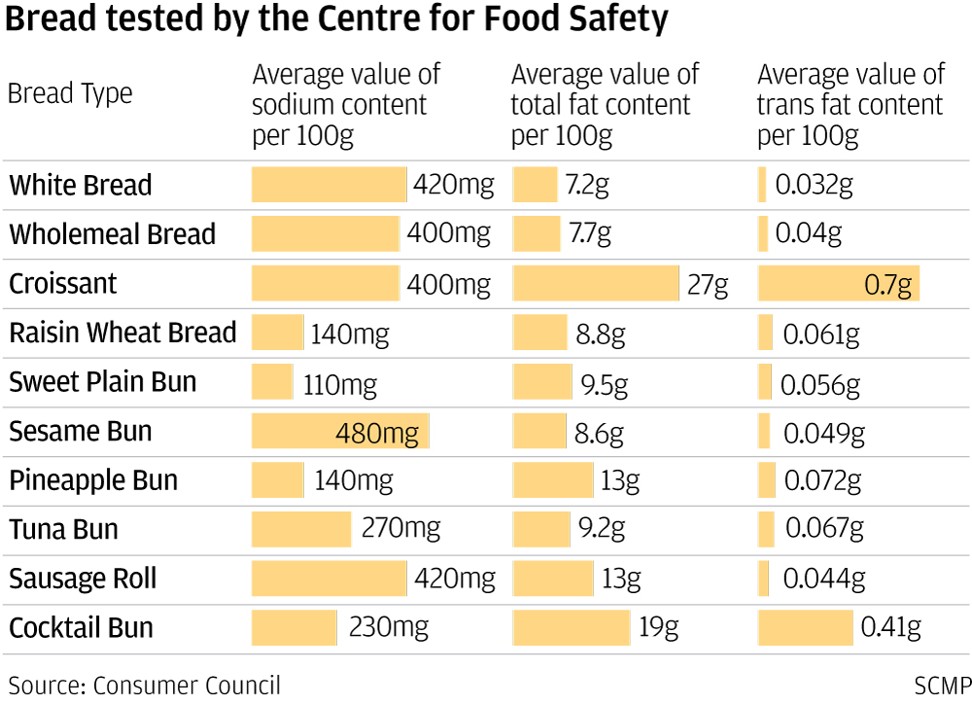
Croissants, sausage rolls and pineapple buns: which of Hong Kong’s favourite breads has the most fat and sodium?
- Consumer Council warns of dangers lurking in some of Hong Kong’s favourite baked goods
- Health experts urge public to vary their consumption of breads to offset risks in each
Hong Kong’s Consumer Council warned of the health dangers lurking in some of the city’s favourite baked goods on Thursday.
The council said croissants and cocktail buns were higher in fat content while sausage rolls, sesame buns, white bread and wholemeal bread contained higher levels of sodium on average.
The watchdog’s latest study found less salt in sweet plain buns and raisin wheat bread as well as pineapple bun samples and less fat in white bread and wholemeal bread products.

Consumers should not eat just one or two types of bread but vary their consumption among several types
But Dr Henry Ng Chi-cheung, principal medical officer at the Centre for Food Safety urged consumers to maintain a balanced and diverse diet as the research focused mainly on sodium, total fat and trans-fat contents and did not cover other ingredients, such as sugar.
“Some bread may contain lower sodium levels but have a higher sugar content,” Ng said. “Consumers should not eat just one or two types of bread but vary their consumption among several types. Then they may be able to reduce health risks.”
Hongkongers fear cancer the most – but they’re also confused by it
The food safety authority studied the sodium, total fat and trans-fat content in 110 bread samples across 10 types of bread: white, wholemeal, croissants, raisin wheat bread, sweet plain buns, sesame buns, pineapple buns, cocktail buns, tuna buns and sausage rolls.
All 10 croissant products tested were classified as “high fat” according to the centre’s benchmark, which ranks foods with more than 20 grams of fat per 100 grams as such. The 10 samples were found to have a total fat content ranging from 23 grams to 31 grams per 100 grams.
Three cocktail buns also fell under the same category.

“Excess fat intake has been linked to major health problems, including an increased risk of heart disease, obesity, hypertension and diabetes,” Ng said.
Healthy future rests on lunchbox choices
One company which had its croissants tested was A-1 Bakery. The sample tested contained 30 grams of total fat per 100 grams.
The manufacturer for A-1 Bakery said the traditional way to make the pastry was to put butter in the dough, and that could lead to a higher fat content.

The company said consumers should have a balanced diet. It added that its final target was to cut trans fat content to zero and that it would have a review with the manufacturer.
Another of the report’s findings was sesame buns had the highest average amount of sodium, with 480 milligrams per 100 grams on average, followed by sausage rolls, white bread, wholemeal bread and croissants.
One sesame bun and one sausage roll product were classified as “high in salt”, containing more than 600 milligrams of sodium per 100 grams of food, according to the centre’s guidelines.

Ng said consuming too much sodium can lead to a high risk of developing high blood pressure and that can increase the potential of heart attack and stroke.
The council added the absorption of salt content through white bread should not be ignored following the dietary pattern of making a sandwich with two pieces of bread.
Ng suggested consumers to make sandwiches with vegetables to cut down salt absorption.
He said the centre will talk with the bakery sector on how to improve its formulas, adding that targets could be set for suppliers to meet so as to reduce the salt content in bread.
The council added that suppliers should assess nutrients constantly in their breads to ensure public health.

